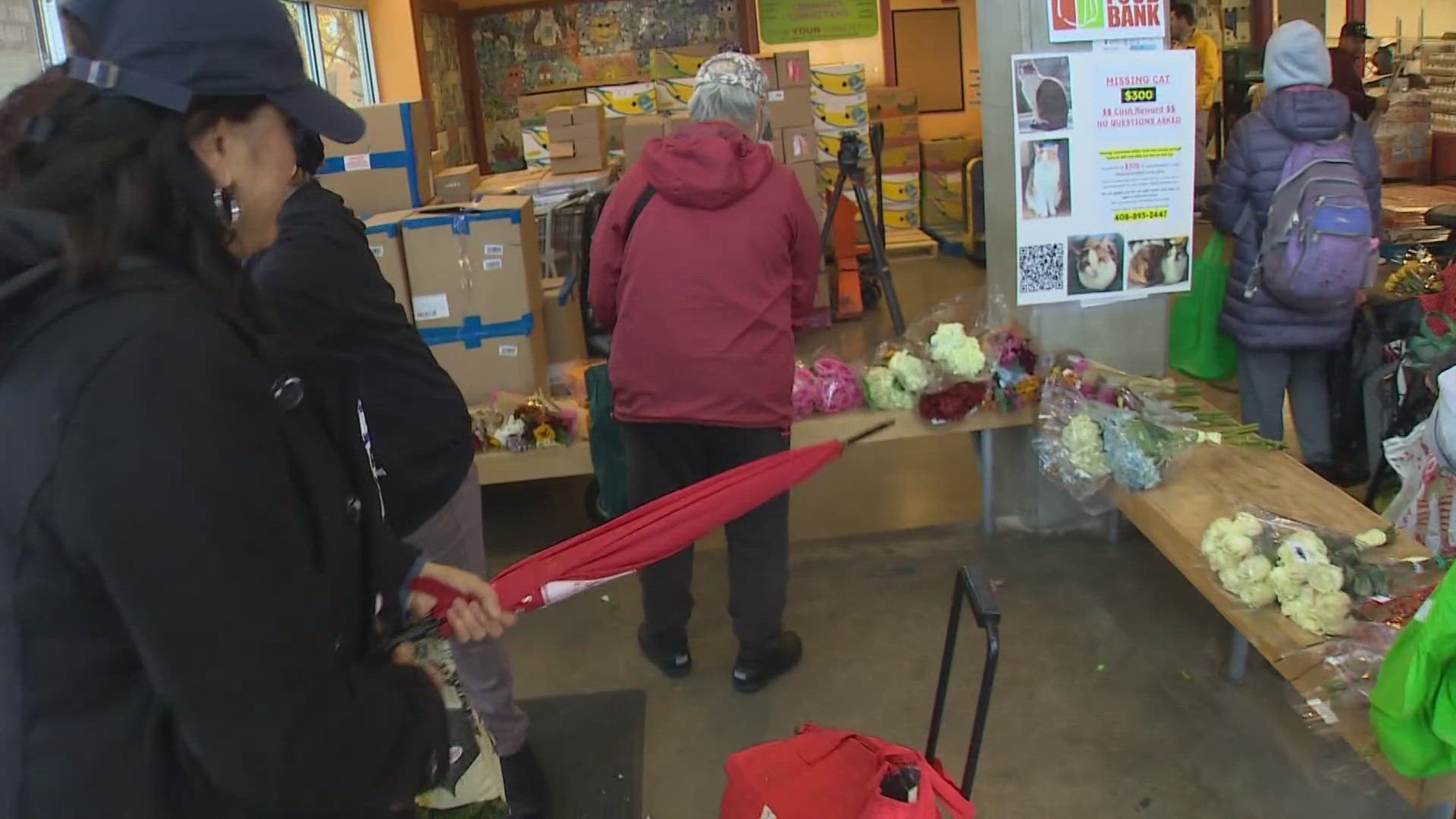SEATTLE — Four mornings a week there’s a line out the door at the West Seattle Food Bank. Clients are waiting for the food bank to open to do their weekly grocery shopping.
On this day, there are bouquets of flowers at the entrance for people to take. They were donated by a grocery store. Corinne Culbertson picked out some flowers to take home.
“I love coming here,” she said.
Culbertson is one of about 300-400 people who will come through these doors on a single day. She said she loves coming here for the fresh vegetables from wholesalers and local gardens. Plus, she enjoys the friendly volunteers there to assist.
On her shopping list today are veggies for the vegetable stew she’s making for dinner.
Like everyone here there’s a reason she needs this extra bit of help.
She’s been coming to the West Seattle Food Bank for 12 years. It started after her husband passed away when her kids were still in high school. Cutting out grocery costs helped her scrape by.
The West Seattle Food Bank said stories like Culbertson’s are now more common than ever.
"Ever since Covid (the demand) has just continued to climb. We haven't seen a slowdown at all," Development Director Robbin Peterson said.
The West Seattle Food Bank has seen a 30% increase in demand every year since 2020.
"If people are being outpriced by their homes, they're having to find ways to save in other ways,” Peterson said. “Sometimes that’s their food budget. If we can help them stretch that they may be able to survive a little bit longer.”
To meet those demands, there are 50 volunteers sorting, distributing and even driving. The West Seattle Food Bank assembles frequent mobile food banks too.
"A lot of these people are seniors, or they're disabled so we bring the food to them," Peterson said.
The food bank also home delivers to 400 clients a week.
All of this supply is not cheap. They spend up to a million dollars a year in food costs purchasing things like meats, dairy and fresh produce.
“Really good wholesome, culturally and dietarily relevant foods,” Peterson said.
They need as much help as they can get. One of the best ways to help is to donate money.
"I always say for the price of a can of tuna if you gave us that money we can buy three cans of tuna," Peterson said.
They anticipate the numbers will continue to rise as many people struggle with cost of living.
Culbertson said she recently brought a couple of her neighbors to the food bank. They’ve struggled to make it through the month financially and had never been to a food bank before.
"That's really a stigma. ‘Oh you go to the food bank? Yes, I go the food bank,’” Culbertson proudly tells others.
The West Seattle Food Bank also provides rent and utility assistance for its clients in need. It also has a free clothing bank too.
Home Team Harvest, Washington state’s largest annual food drive, has the goal of providing 24 million meals this year.
How to help
Click here to donate online through Northwest Harvest between now and the end of the year.
Through Dec. 31, donate $5, $10 or $12 towards grocery cards at your local Safeway store.
In-person donations will also be accepted at a number of locations on Nov. 24 from 9 a.m. to 1 p.m. Drive up donations will be accepted at the following locations:
- Rainier Beach Safeway, 9262 Rainier Avenue S, Seattle, WA
- Eloise's Cooking Pot, 10303 Portland Ave E, Tacoma, WA
- Feeding Feasible Feasts, Bothell United Methodist Church, 18515 92nd Avenue NE, Bothell, WA
Walk up donations only will be accepted at Lumen Field in Seattle prior to the Seahawks game that day.
Tune in to KING 5 on Sunday, Nov. 24, at 9 a.m. for a one-hour broadcast special to see how your support for Home Team Harvest helps change lives in our community.

